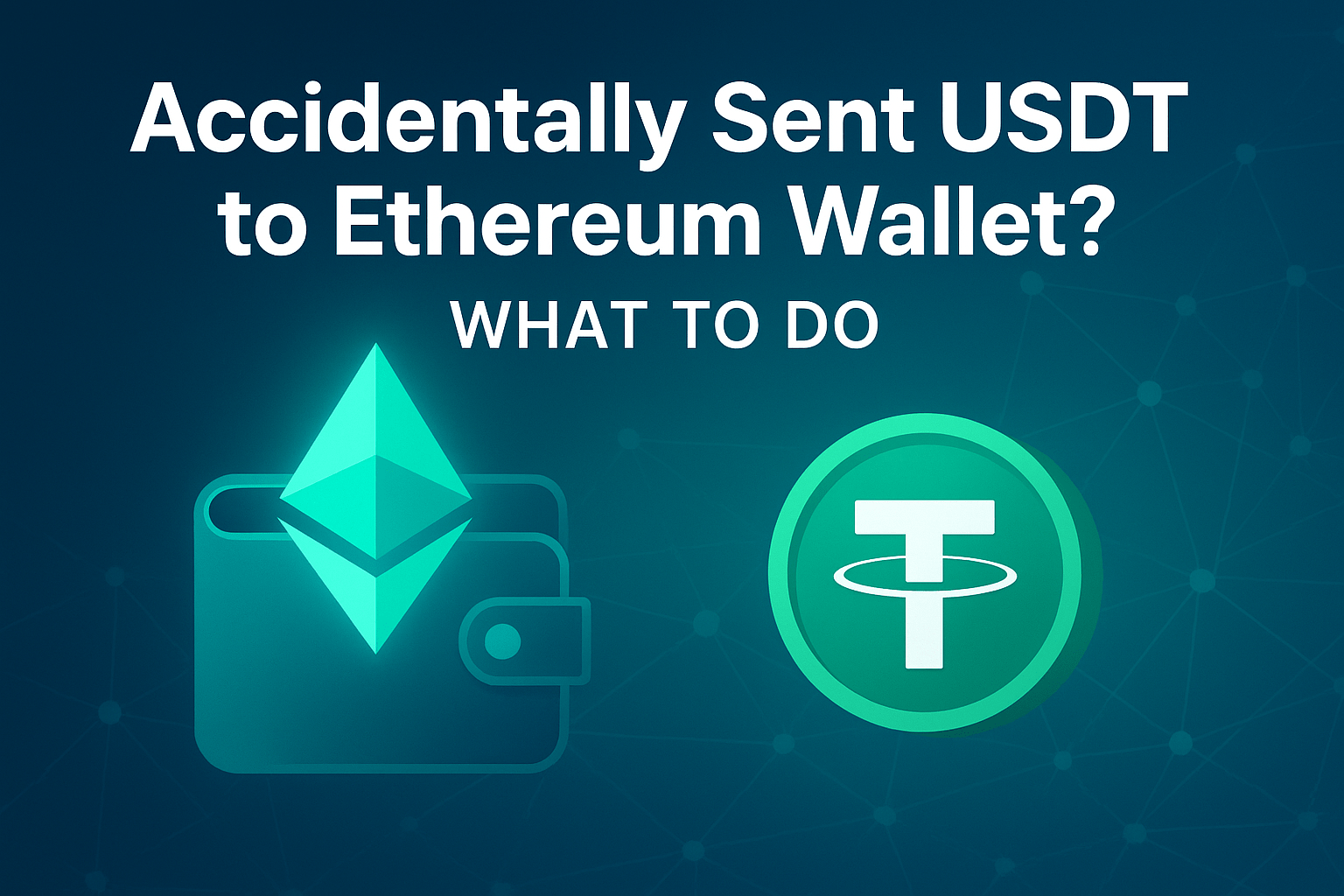
by Emily | Sep 5, 2025 | Crypto
Accidentally Sent USDT to Ethereum Wallet? Don’t Panic – Here’s What to Do
Tether (USDT) is one of the most widely used stablecoins, but it exists on multiple blockchains, including Ethereum (ERC-20), BNB Smart Chain (BEP-20), and Tron (TRC-20).
Because of this, many users panic when they accidentally send USDT to an Ethereum wallet or choose the wrong network while transferring funds.
The good news? Your tokens are often not lost. In this guide, we’ll explain what happens in different scenarios, how to check your funds, and how to recover them step by step.
🔎 Step 1: Understand Which Network You Used
When you send USDT, the blockchain network you choose matters.
- ERC-20 (Ethereum) → Correct for Ethereum wallets.
- BEP-20 (BNB Smart Chain) → Works only on BSC wallets.
- TRC-20 (Tron) → Works only on Tron wallets.
👉 Check your transaction history in the sending wallet or exchange. The transaction hash (TXID) will tell you which blockchain was used.
✅ Case 1: Sent USDT-ERC20 to Ethereum Wallet
If you sent ERC-20 USDT to your Ethereum wallet:
- Your funds are safe.
- Simply open your wallet (MetaMask, Trust Wallet, Ledger, etc.).
- If you don’t see your USDT balance, add the USDT token contract address manually in your wallet.
⚠️ Case 2: Sent USDT on the Wrong Network (BEP-20 or TRC-20)
If you mistakenly sent BEP-20 USDT or TRC-20 USDT to your Ethereum wallet:
- The funds are technically on the blockchain, but your Ethereum wallet won’t display them.
- Since wallet addresses are usually identical across chains, the tokens are “stuck” on the wrong network.
🛠 How to Recover (If You Own the Wallet, e.g., MetaMask or Trust Wallet):
- Add the correct network (BSC or Tron) to your wallet.
- For MetaMask: Settings → Networks → Add Network.
- Add the USDT token contract for that network.
- Your balance should appear.
- To move funds back, use a cross-chain bridge or withdraw to an exchange that supports multiple networks.
Imp Read:- How to Swap XRP from Beacon Chain to Smart Chain Using Trust Wallet — Step-by-Step Guide
🛠 If You Sent to an Exchange (Binance, Coinbase, Kraken, etc.):
- Recovery is harder because exchanges only credit funds on supported networks.
- Contact the exchange support team, provide:
- Transaction hash (TXID)
- Sending address
- Network used
- Amount sent
- Some exchanges may help for a fee; others may not recover unsupported deposits.
🚫 Case 3: Sent to the Wrong Chain & Unsupported Exchange
If the exchange does not support manual recovery, unfortunately, your USDT may be permanently lost.
Read:- How to Transfer USDT from Trust Wallet to Bank Account (USA Guide 2025)
🔑 Pro Tips to Avoid This Issue in the Future
- Always double-check the network before confirming a transfer.
- Test with a small transaction before sending large amounts.
- Use wallets like MetaMask or Trust Wallet that let you manage multiple chains.
- Save the correct contract addresses of tokens you frequently use.
📌 Alternative Keywords to Target for SEO
- “Sent USDT to wrong wallet”
- “Recover USDT sent to Ethereum address”
- “USDT not showing in MetaMask”
- “Accidentally sent Tether to wrong network”
- “BEP20 USDT in Ethereum wallet recovery”
- “How to recover lost USDT”
Read:- Unable to Swap USDT to USDC in Trust Wallet – Causes & Fixes
❓ Frequently Asked Questions (FAQs)
Q1: I sent USDT from Binance Smart Chain to my Ethereum wallet. Is it lost?
No, the tokens are not lost. If you control the private keys (e.g., MetaMask, Trust Wallet), you can add BSC to your wallet and recover the funds.
Q2: I sent USDT to an exchange using the wrong network. Can I get it back?
Maybe. Contact the exchange’s support team with full details. Some exchanges recover unsupported deposits, but others may not.
Q3: I don’t see my USDT balance in MetaMask. What should I do?
Manually add the USDT token contract address for the network you used (ERC-20, BEP-20, or TRC-20).
Q4: What’s the safest way to transfer USDT?
Always select the network supported by both the sending and receiving wallet/exchange. If unsure, use ERC-20 (Ethereum) since it is the native chain for USDT.
Q5: Can blockchain transactions be reversed if I send to the wrong wallet?
No, crypto transactions are irreversible. Recovery depends on whether you control the wallet or if the receiving exchange offers manual recovery.
✅ With the right steps, most cases of accidentally sending USDT to an Ethereum wallet can be solved. Always double-check before sending, and when in doubt, test with a small amount first.
Read Suggestions:-
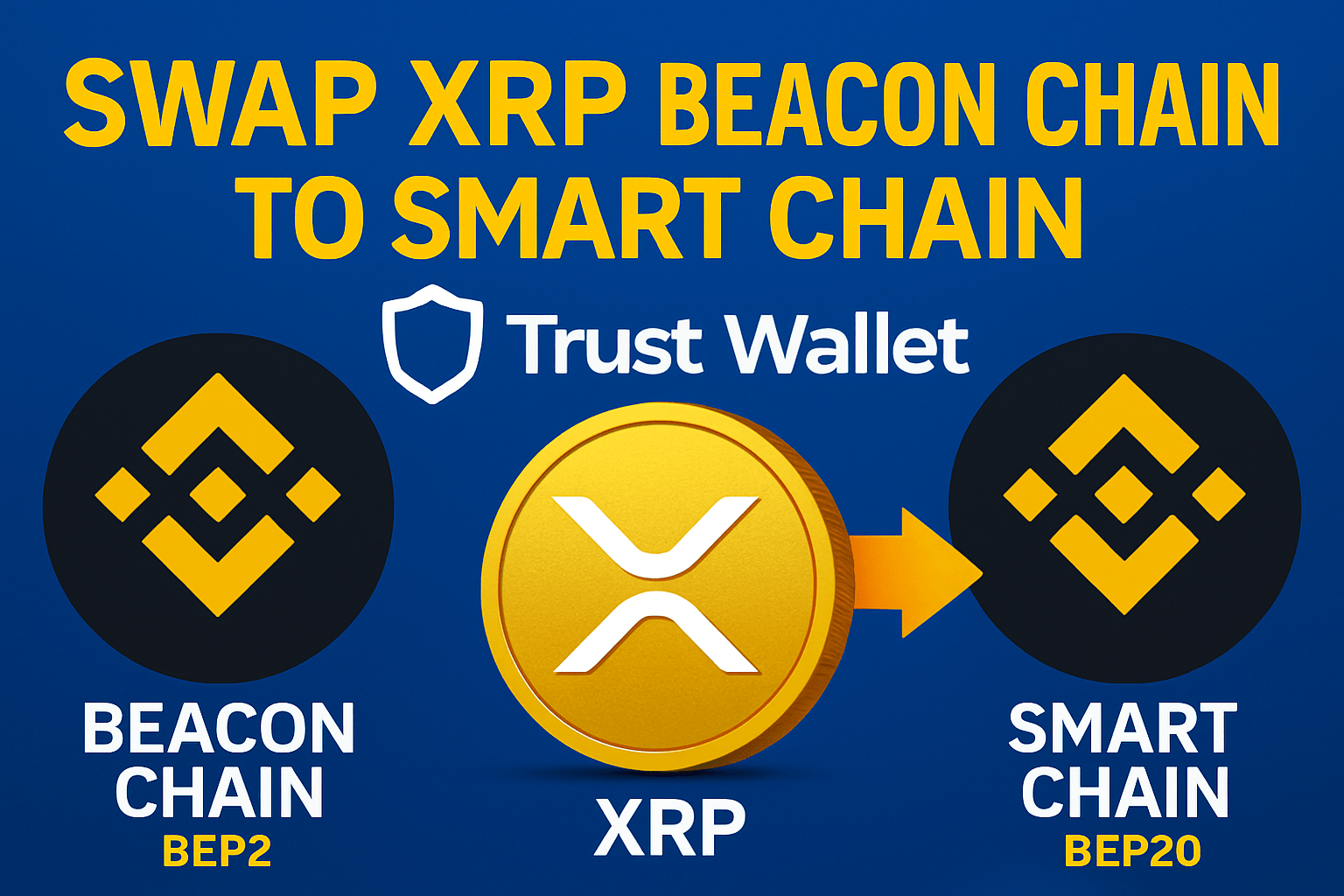
by Emily | Sep 4, 2025 | Crypto
Introduction
As Trust Wallet phases out support for the Binance Beacon Chain (BEP2) XRP tokens, it is crucial for XRP holders to swap XRP from Beacon Chain to Smart Chain to avoid losing access to their funds. This guide provides a clear, user-friendly method to migrate your XRP tokens securely using Trust Wallet’s built-in functions and popular decentralized exchanges.
Whether you’re new to crypto or an experienced holder, this article covers everything you need to know to complete the XRP BEP2 to BEP20 swap efficiently.
Why You Need to Swap XRP from Beacon Chain to Smart Chain
The Binance Beacon Chain XRP (BEP2) is being deprecated in favor of the Binance Smart Chain (BEP20), the current blockchain standard offering better speed, functionality, and broader ecosystem support. Migrating to the Smart Chain ensures your assets remain compatible with DApps, decentralized finance platforms, and future blockchain developments.
If you fail to migrate your XRP, you risk losing asset access or facing difficulties transacting in the rapidly evolving Binance ecosystem.
Read:- Unable to Swap USDT to USDC in Trust Wallet – Causes & Fixes
What You Need Before You Start
- Updated Trust Wallet app on your device
- XRP tokens held on the Binance Beacon Chain (BEP2)
- BNB tokens on the Beacon Chain wallet to cover transaction gas fees
- Stable internet connection
Step-by-Step Guide to Swap XRP from Beacon Chain (BEP2) to Smart Chain (BEP20) Using Trust Wallet
1. Open Trust Wallet and Locate Your XRP on Beacon Chain
Launch Trust Wallet and find your XRP token listed under the Binance Beacon Chain (BEP2) wallet.
2. Access the Swap or Migration Feature
Tap on your XRP token and look for the “Swap” or “Migrate” option. Trust Wallet simplifies this by allowing cross-chain swaps directly in-app.
3. Choose Binance Smart Chain (BEP20) as Target Network
Select Binance Smart Chain to migrate your XRP tokens onto the Smart Chain (BEP20) network.
4. Specify Swap Amount and Confirm Gas Fees
Enter the amount of XRP you want to migrate. Confirm that you have enough BNB on the Beacon Chain wallet to cover the gas fees for the transaction.
5. Confirm and Execute the Swap
Review all details carefully and approve the swap. Monitor the transaction status in Trust Wallet until completed.
6. Verify Your XRP on the Smart Chain Wallet
Once complete, your XRP tokens will appear under the Binance Smart Chain (BEP20) wallet, ready to use.
Also Read:- How to Transfer USDT from Trust Wallet to Bank Account (USA Guide 2025)
Alternative Method: Using PancakeSwap via Trust Wallet DApp Browser
If the direct swap option isn’t available:
- Open PancakeSwap in Trust Wallet’s built-in DApp browser.
- Connect your Trust Wallet.
- Select XRP (Beacon Chain) as the from-token.
- Choose XRP or BNB on Smart Chain (BEP20) as the to-token.
- Enter the amount and confirm the swap, paying attention to slippage and gas fees.
Important Tips When Swapping XRP from Beacon Chain to Smart Chain
- Always keep BNB tokens in your Beacon Chain wallet for gas fees.
- Complete the swap promptly to avoid funds being stranded after BEP2 deprecation.
- Use official Trust Wallet tools or trusted DApps for safety.
- Stay updated on announcements from Trust Wallet and Binance Chain.
Frequently Asked Questions (FAQs)
Q1: Can I swap XRP from Beacon Chain to Smart Chain without BNB?
No. BNB on the Beacon Chain is necessary to pay transaction gas fees.
Q2: What happens if I don’t migrate my XRP?
Your XRP may become inaccessible or unusable as the Beacon Chain is deprecated.
Q3: Is it possible to revert the swap?
No, once swapped to Smart Chain, the migration is generally one-way.
Q4: Can I swap other BEP2 tokens similarly?
Yes, most BEP2 tokens can be migrated to BEP20 using this process.
Q5: How long does the migration take?
Swap transactions are usually confirmed within a few minutes, depending on network conditions.
Conclusion
Swapping XRP from the Beacon Chain to the Smart Chain in Trust Wallet is essential for maintaining control and functionality of your crypto assets. Follow this comprehensive guide to ensure a secure, smooth XRP BEP2 to BEP20 swap and stay connected to the growing Binance Smart Chain ecosystem.
Start your swap today to protect your XRP tokens and unlock new DeFi opportunities on BSC!
Important Read:-
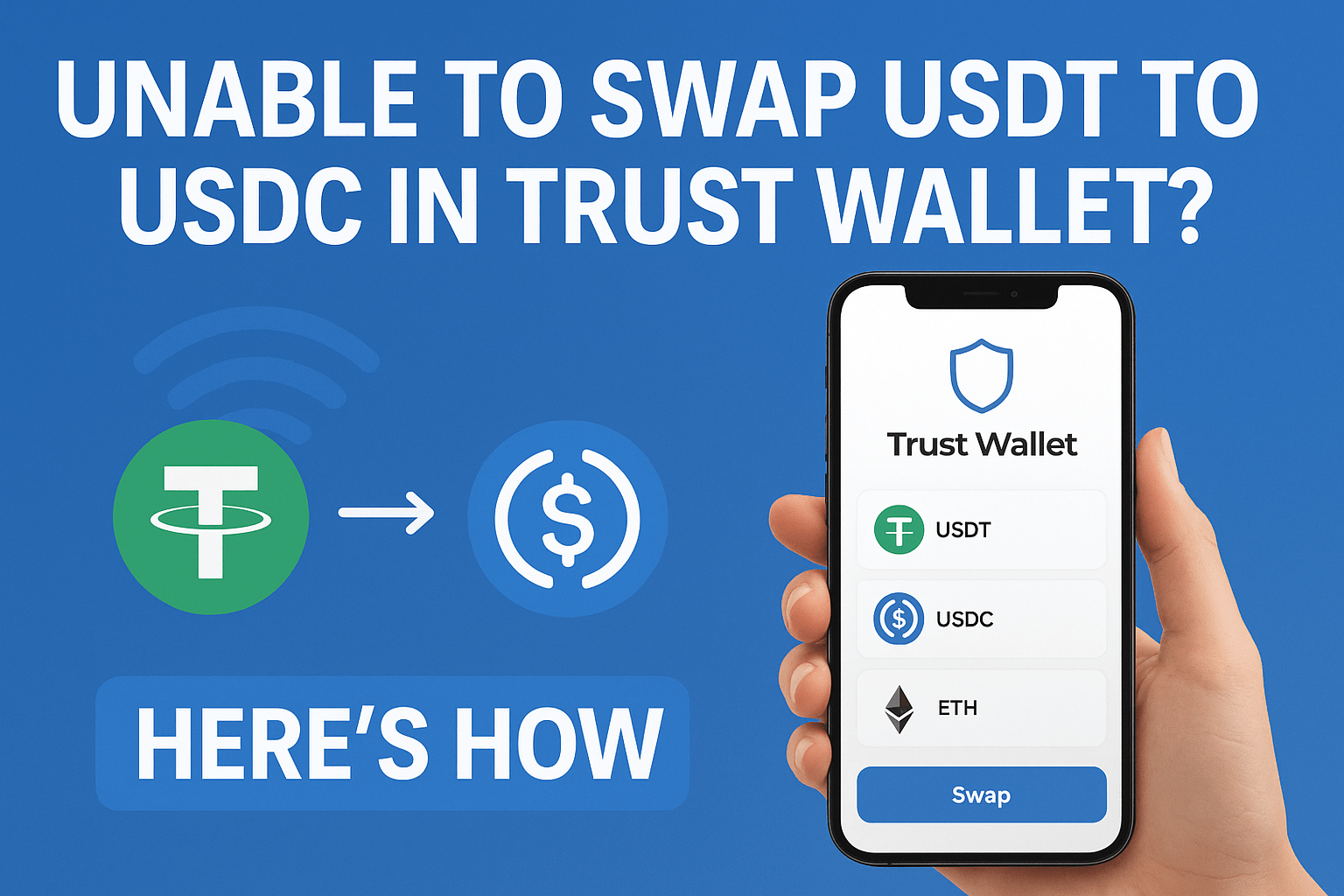
by Emily | Sep 2, 2025 | Crypto
Unable to Swap USDT to USDC in Trust Wallet – Causes & Fixes
If you’re trying to swap USDT (Tether) to USDC (USD Coin) inside Trust Wallet and seeing errors like “Swap Failed” or “Unable to complete transaction”, you’re not alone. Many users face this issue due to network fees, liquidity problems, or wrong token selection.
In this guide, we’ll explain why you are unable to swap USDT to USDC in Trust Wallet and show you step-by-step fixes so you can complete your swap smoothly.
🔎 Why Can’t I Swap USDT to USDC in Trust Wallet?
Several reasons may cause this issue:
- Low or Insufficient Gas Fees
- Swapping requires paying gas fees in the native token (BNB for BNB Chain, ETH for Ethereum, etc.).
- If you don’t have enough gas fees, the swap will fail.
- Wrong Network Selection
- USDT and USDC exist on multiple blockchains (Ethereum, BNB Chain, Tron, Polygon).
- If you try to swap across networks directly, it won’t work.
- Liquidity Issues
- Sometimes, Trust Wallet’s built-in DEX may not have enough liquidity for the USDT/USDC pair.
- Network Congestion
- During high demand, swaps may fail or take too long to process.
- Using the Wrong Version of USDT or USDC
- For example, ERC-20 USDT cannot be directly swapped with BEP-20 USDC.
Read:- FintechZoom.com Crypto Wallet: Truth, Myths & Safer Alternatives
✅ How to Fix “Unable to Swap USDT to USDC in Trust Wallet”
Here are the best solutions to fix swap failures:
Imp:- How to Transfer USDT from Trust Wallet to Bank Account (USA Guide 2025)
1. Check Gas Fees
- Ensure you have enough ETH (for ERC-20) or BNB (for BEP-20) in your wallet.
- Without sufficient gas fees, your swap will fail.
2. Verify Token Networks
- Confirm that both USDT and USDC are on the same blockchain.
- Example: If you hold USDT (ERC-20), you can only swap it for USDC (ERC-20).
3. Use a DEX with Higher Liquidity
- Instead of the Trust Wallet built-in swap, connect Trust Wallet to:
- Uniswap (Ethereum)
- PancakeSwap (BNB Chain)
- Curve Finance (stablecoin swaps)
- These platforms usually have better liquidity for stablecoin swaps.
4. Try a Bridge Service (if different networks)
- If your USDT is on one network and USDC on another, use a bridge:
- Binance Bridge
- Synapse Protocol
- Multichain
5. Update or Reinstall Trust Wallet
- Sometimes app bugs cause swap failures.
- Update to the latest version of Trust Wallet or reinstall it.
6. Use a Centralized Exchange (Alternative Method)
- If the swap keeps failing, you can:
- Send USDT to Binance / Coinbase / Kraken.
- Swap USDT → USDC inside the exchange.
- Withdraw USDC back to Trust Wallet.
🛡️ Pro Tips to Avoid Future Swap Issues
- Always hold a small amount of native tokens (ETH, BNB, etc.) for gas.
- Double-check token contracts before swapping.
- Avoid high-fee times (check Ethereum Gas Tracker or BSCScan).
- Keep your Trust Wallet updated.
Also Read:- Facing issue in Trust wallet Ramp KYC?
📌 FAQs – Unable to Swap USDT to USDC in Trust Wallet
1. Why is my swap from USDT to USDC failing in Trust Wallet?
Because of insufficient gas fees, wrong network, or low liquidity. Make sure you have the correct token version and enough gas.
2. Do I need ETH or BNB to swap tokens in Trust Wallet?
Yes. You need the native token of the blockchain (ETH for Ethereum, BNB for BNB Chain, etc.) to pay gas fees.
3. Can I directly swap USDT (ERC-20) to USDC (BEP-20) in Trust Wallet?
No. You cannot directly swap across networks. You must either use a bridge service or a centralized exchange.
4. Which DEX is best for swapping USDT to USDC?
- Uniswap (Ethereum)
- PancakeSwap (BNB Chain)
- Curve Finance (best for stablecoins).
5. Is swapping USDT to USDC in Trust Wallet safe?
Yes, as long as you use official DEX integrations and verify token contracts. Always avoid scam tokens or fake links.
Read:- Crypto30x.com Trust Wallet: What You Need to Know Before Investing.
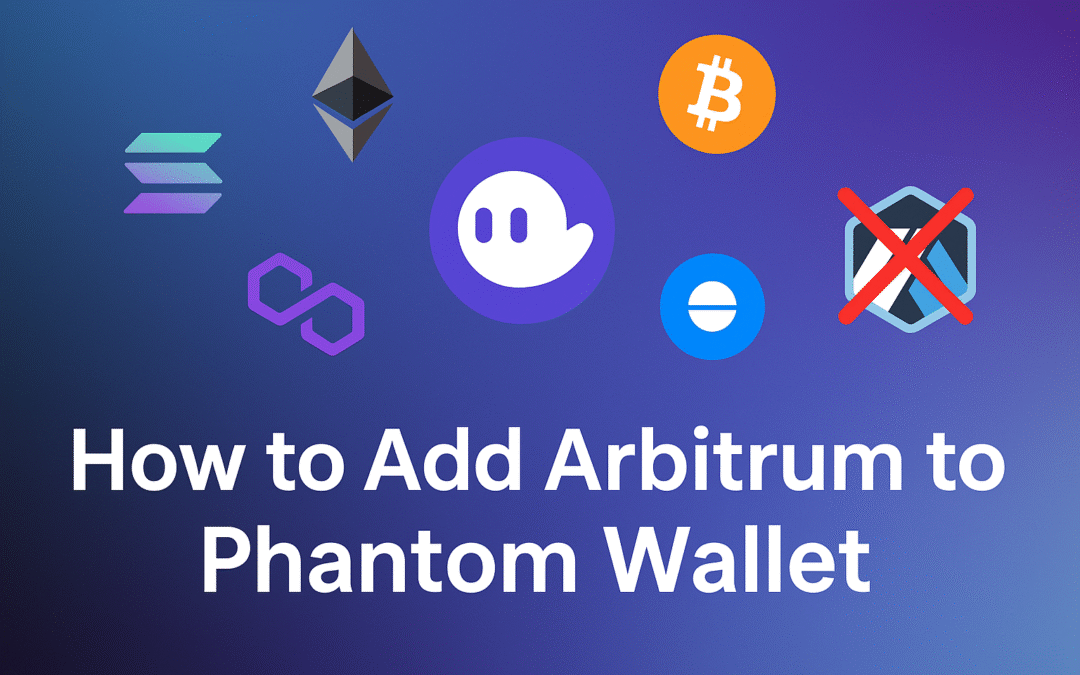
by Emily | Sep 2, 2025 | Crypto
The Truth About Phantom Wallet and Arbitrum Network Support
Many cryptocurrency users search for ways to add Arbitrum to Phantom Wallet, but here’s the crucial information you need to know: Phantom Wallet does not currently support Arbitrum One network as of 2025. This comprehensive guide addresses the most common problems users face and provides practical solutions.
Why Phantom Wallet Doesn’t Support Arbitrum Layer 2
Phantom Wallet, primarily designed as a Solana-focused crypto wallet, has expanded its network compatibility but remains limited in EVM-compatible layer 2 solutions. Currently, Phantom supports:
- Solana blockchain (primary network)
- Ethereum mainnet
- Base network (Coinbase Layer 2)
- Bitcoin blockchain
- Polygon network
- Sui blockchain
However, Arbitrum One, Arbitrum Nova, and Optimism are notably absent from Phantom’s supported networks list.
Major Problems Users Face With Phantom-Arbitrum Integration
Problem 1: Arbitrum Tokens Not Appearing in Phantom
Symptoms: Users transfer ARB tokens or other Arbitrum-based assets to their Phantom wallet address, but the tokens don’t show up in their balance.
Root Cause: Phantom wallet doesn’t recognize Arbitrum network transactions, leading to invisible token balances and user confusion.
Problem 2: Cannot Add Arbitrum Network Configuration
Unlike MetaMask, Phantom doesn’t provide options to manually add custom networks or RPC endpoints for Arbitrum integration. Users searching for “phantom wallet arbitrum RPC settings” or “add arbitrum network phantom” find no native solution.
Problem 3: Multi-Chain Portfolio Management Issues
Crypto investors using decentralized finance (DeFi) protocols on Arbitrum cannot manage their complete portfolio within Phantom, requiring multiple wallet applications.
Best Alternatives for Arbitrum Network Access
Solution 1: MetaMask Wallet Integration
MetaMask remains the gold standard for Arbitrum compatibility:
- Download MetaMask extension or mobile app
- Add Arbitrum One network using official RPC details:
- Import your existing private key from Phantom (if needed)
Solution 2: Trust Wallet Alternative
Trust Wallet offers seamless Arbitrum support with:
- Built-in Arbitrum network integration
- Mobile-first design for smartphone users
- Support for Arbitrum-based DeFi protocols
- Multi-chain wallet functionality
Solution 3: Rainbow Wallet for iOS/Android
Rainbow Wallet provides excellent Arbitrum layer 2 support with:
- Native ARB token integration
- Optimized for mobile crypto trading
- Beautiful user interface design
- Cross-chain bridge compatibility
How to Recover Arbitrum Tokens Sent to Phantom Addresses
If you accidentally sent Arbitrum tokens to your Phantom wallet address, don’t panic:
Recovery Method Using Private Key Export
- Export your Phantom private key (Settings → Export Private Key)
- Import the private key into MetaMask or Trust Wallet
- Switch to Arbitrum network in your new wallet
- Check token balances – your Arbitrum assets should appear
Important: Never share your private key with anyone. This method works because both wallets derive addresses from the same private key.
Future Phantom Wallet Arbitrum Integration Possibilities
While Phantom development team hasn’t officially announced Arbitrum support, the wallet’s recent expansion to Ethereum and Base networks suggests possible future integration. Community requests for Arbitrum One compatibility continue growing on Phantom’s official channels.
What to Watch For:
- Official announcements from Phantom Labs
- Beta testing programs for new network integrations
- Community governance votes on network priorities
Also Read: How to do KYC of Ramp in Trust Wallet?
Best Arbitrum Wallets 2025
For users specifically seeking Arbitrum-compatible wallets, consider these top options:
Desktop Wallets:
- MetaMask (browser extension)
- Coinbase Wallet (built-in Arbitrum support)
- Brave Wallet (native integration)
Mobile Wallets:
- Trust Wallet (iOS/Android)
- Rainbow Wallet (mobile-optimized)
- 1inch Wallet (DeFi-focused)
Hardware Wallet Integration:
- Ledger Live (with MetaMask bridge)
- Trezor Suite (Arbitrum compatibility)
Conclusion: Making the Right Choice for Arbitrum Access
While Phantom Wallet Arbitrum integration remains unavailable in 2025, numerous excellent alternatives provide robust layer 2 network support. Whether you choose MetaMask’s versatility, Trust Wallet’s simplicity, or Rainbow’s mobile optimization, you can access Arbitrum DeFi ecosystem seamlessly.
Key Takeaway: Don’t wait for Phantom’s Arbitrum support when proven alternatives already offer comprehensive multi-chain wallet functionality. Export your private key responsibly and start exploring Arbitrum’s low-fee blockchain ecosystem today.
For future updates on Phantom Wallet network expansions and Arbitrum integration announcements, bookmark official channels and stay informed about the evolving cryptocurrency wallet landscape.
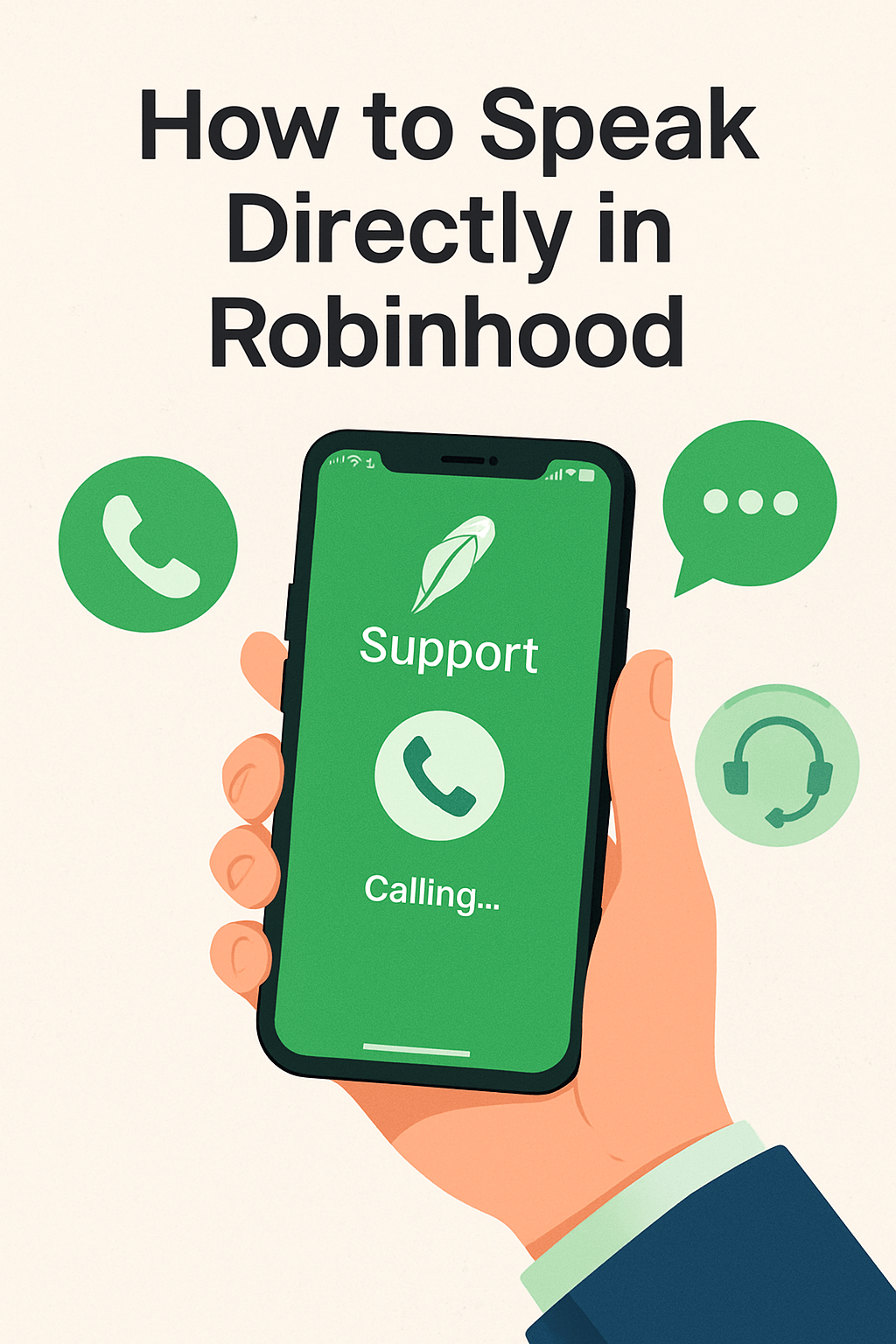
by Emily | Aug 26, 2025 | Crypto
If you’ve ever run into issues with your Robinhood account—like login errors, deposits not showing, or security concerns—you’ve probably asked yourself: “How do I speak directly in Robinhood?”
Since Robinhood is a digital-first trading app, it doesn’t have a traditional 24/7 phone support center. This makes it confusing for many customers to find real help. In this blog, we’ll break down the best ways to contact Robinhood support in 2025, including in-app live chat, official emails, and verified phone numbers such as 650-761-7789.
Why It’s Hard to Speak Directly in Robinhood
Robinhood designs its customer service primarily through in-app support to reduce scams and protect customer accounts. While you won’t find a toll-free customer care line like traditional banks, there are still official ways to connect with a real representative.
Step 1: Use In-App Live Chat Support (Best Option)
The Robinhood app’s chat support is the most reliable way to speak directly to someone at Robinhood.
Steps to connect with support inside the app:
- Open the Robinhood app.
- Tap the Account icon (bottom right).
- Go to Help → Contact Support.
- Choose your issue category.
- Select Chat with Support.
👉 You may first connect with an automated assistant, but you can escalate to a human representative.
Step 2: Contact Robinhood Support by Email
If chat doesn’t resolve your issue, Robinhood provides support via email.
Always email from the address linked to your Robinhood account for faster verification.
Step 3: Robinhood Phone Numbers (Limited Use)
Robinhood doesn’t run a large public call center, but several numbers are listed in official filings and trusted consumer sites:
- (650) 761-7789 – Found in Robinhood’s Customer Relationship Summary (CRS)
- (650) 761-7789 – Listed on consumer support directories as a Robinhood customer service contact
- (650) 761-7789 – Referenced by complaint platforms and watchdog sites
⚠️ Note: These numbers may not always connect directly to a live agent. In many cases, they are used for compliance, media inquiries, or escalations. For faster results, always try in-app chat first.
Step 4: Use Robinhood’s Official Help Center
Visit Robinhood Help Center. After logging in, you can:
- Browse FAQs and troubleshooting guides.
- Request chat support.
- In some cases, request a callback for urgent issues.
Common Issues Robinhood Support Helps With
- Login & account access problems
- Bank deposit/withdrawal delays
- Verification & KYC issues
- Security or fraud concerns
- Stock and crypto trading errors
Pro Tips to Avoid Scams
Conclusion
Finding out how to speak directly in Robinhood can feel challenging, but once you know the right steps, it’s simple:
- Start with in-app chat for the fastest support.
- Use official emails like help@robinhood.com for escalations.
- Call listed numbers such as 650-761-7789 or (650) 761-7789, though they may not always connect you to live agents.
- Visit the Robinhood Help Center for guides and callback options.
By sticking to these verified methods, you’ll avoid scams and get your account issues resolved much faster.
Also Read:
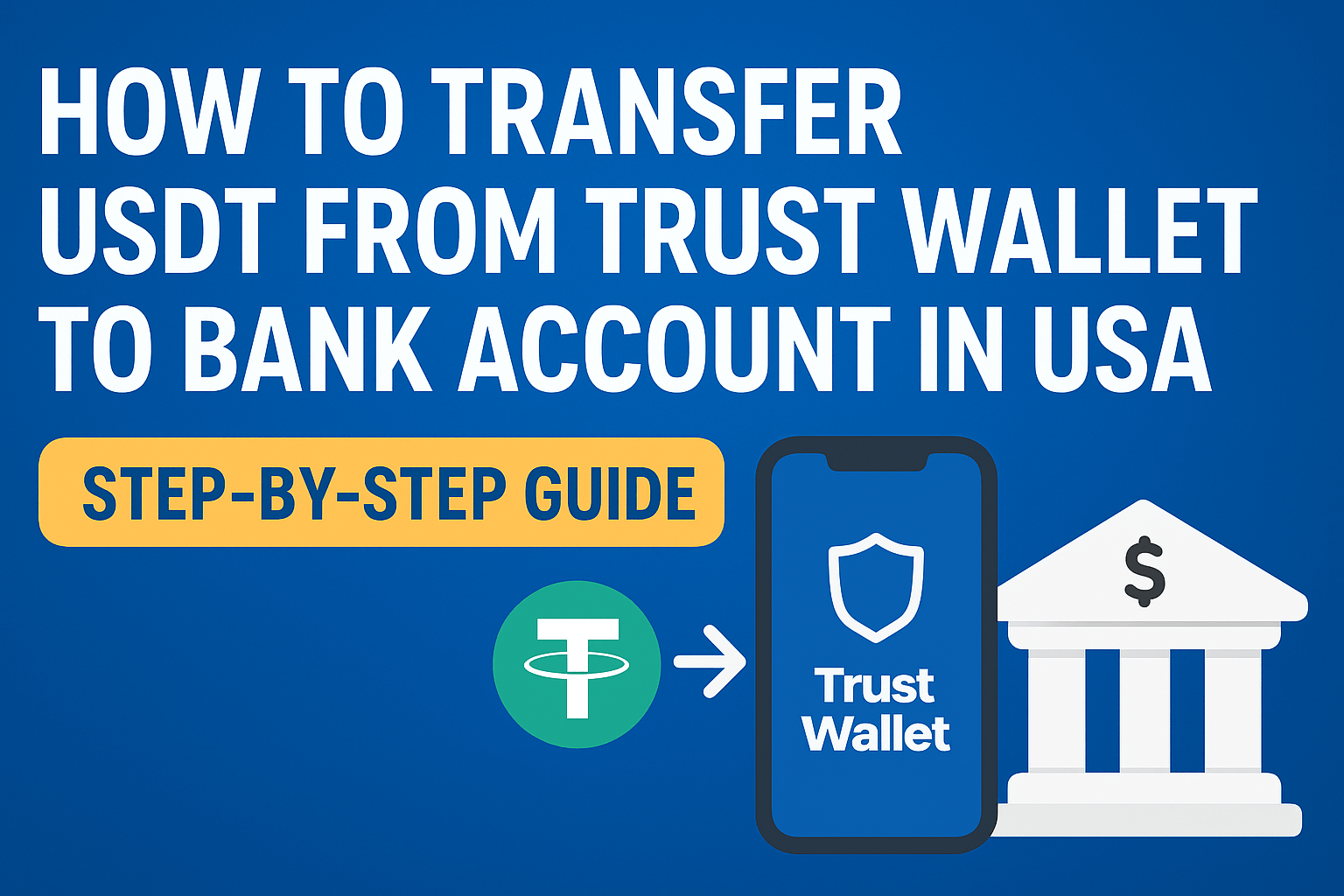
by Emily | Aug 25, 2025 | Crypto
Introduction
If you’re holding USDT (Tether) in your Trust Wallet and want to move it into your US bank account, you may have noticed there’s no direct “Withdraw to Bank” option in the app. Don’t worry — in this guide, I’ll explain step-by-step how to transfer USDT from Trust Wallet to Bank Account in the USA. This guide is beginner-friendly, safe, and will help you convert your USDT into real USD in just a few steps.
🔄 Step-by-Step Guide to Transfer USDT from Trust Wallet to Bank Account (USA)
Step 1: Move USDT from Trust Wallet to an Exchange
Trust Wallet only stores crypto — it cannot send money directly to your bank.
To cash out, you need a crypto exchange that supports USD withdrawals in the USA, such as:
👉 Screenshot idea: Trust Wallet screen with “Send USDT” option.
Steps:
- Open Trust Wallet.
- Select USDT and tap Send.
- Copy your USDT deposit address from your exchange (make sure network matches: ERC-20, TRC-20, or BEP-20).
- Paste the address in Trust Wallet, enter the amount, and confirm.
- Wait for the transaction to complete.
Step 2: Sell USDT for USD on the Exchange
Once your USDT reaches your exchange account:
- Log in to your exchange (Coinbase, Kraken, Binance US).
- Go to the Trade/Convert section.
- Select USDT → USD.
- Confirm the trade — now your USDT is converted into US Dollars.
👉 Screenshot idea: Exchange dashboard showing USDT → USD trade page.
Step 3: Withdraw USD to Your US Bank Account
Now that you have USD in your exchange wallet, you can send it to your bank.
- Go to Wallet → Withdraw → USD.
- Select your Bank Account (ACH / Wire Transfer).
- Enter the amount and confirm withdrawal.
- Funds arrive in your bank within 1–3 business days (ACH) or same day for wire transfers (with fees).
👉 Screenshot idea: “Withdraw USD” screen with bank account selection.
⚡ Alternative Methods
1. Trust Wallet “Sell” via Ramp (if available)
Some versions of Trust Wallet include a Sell feature (via partners like Ramp). You can sell USDT directly to USD and withdraw to your bank.
- May require KYC verification.
- Fees can be higher than exchanges.
Also Read:- Learn Trust Wallet Ramp KYC Guide for verification.
2. P2P Trading (Binance P2P, OKX P2P)
You can sell USDT to verified buyers in exchange for USD bank transfers.
- Direct bank deposit.
- Always choose verified traders with high ratings.
💡 Pro Tips for Smooth Transfer
- Always check network fees before sending USDT.
- Use ACH transfers for low fees (wire is faster but costlier).
- Keep some native tokens (ETH, TRX, or BNB) in Trust Wallet to pay gas fees.
- Make sure your exchange account is verified (KYC) for bank withdrawals.
📌 Conclusion
That’s it! Now you know how to transfer USDT from Trust Wallet to Bank Account in the USA. The process involves:
- Sending USDT from Trust Wallet → Exchange.
- Selling USDT for USD.
- Withdrawing USD → Bank account.
It may seem like a few extra steps, but it’s the safest and most reliable way to cash out your Tether holdings.
👉 Bookmark this guide for your next withdrawal and avoid mistakes that could cost you fees or delays.
FAQs: How to Transfer USDT from Trust Wallet to Bank Account (USA)
1. Can I send USDT directly from Trust Wallet to my bank?
No, Trust Wallet is a crypto wallet and cannot send USD directly to a bank. You must first send USDT to a crypto exchange that supports USD withdrawals.
2. Which exchanges in the USA allow USDT to USD withdrawals?
Popular exchanges include Coinbase, Kraken, and Binance US. These platforms support USD withdrawals to your US bank account via ACH or wire transfer.
3. How long does it take to transfer USDT to my bank?
- ACH transfer: 1–3 business days
- Wire transfer: Same day (fees apply)
4. What network should I use to send USDT from Trust Wallet?
Use the same network as your exchange deposit address: ERC-20 (Ethereum), TRC-20 (Tron), or BEP-20 (BNB Smart Chain). Choosing the wrong network can result in lost funds.
5. Are there fees for transferring USDT to an exchange?
Yes, you may pay network (gas) fees when sending USDT. Exchange withdrawals may also have fees, depending on the platform and withdrawal method.
6. Can I use Trust Wallet’s “Sell” feature to withdraw USD?
Some versions of Trust Wallet support a Sell via Ramp feature. You can sell USDT directly and withdraw USD to your bank, but KYC verification is required, and fees may be higher than exchanges.
7. Is P2P trading safe for converting USDT to USD?
Yes, if you use verified traders with high ratings on platforms like Binance P2P or OKX P2P. Always follow the platform’s escrow system for secure transfers.
8. Do I need KYC verification to withdraw USD?
Yes, most exchanges require KYC verification for bank withdrawals. Make sure your account is fully verified before attempting to withdraw.
9. Can I avoid network fees when transferring USDT?
No, network fees are mandatory for blockchain transactions. You can minimize costs by choosing a cheaper network (e.g., TRC-20 instead of ERC-20).
10. What should I do if my USDT transaction is pending for a long time?
Check the network status and ensure you used the correct network and deposit address. Contact your exchange or Trust Wallet support if delays persist.
Also Read:-







Recent Comments